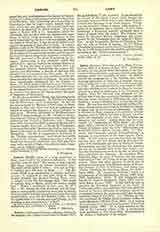

Lamus, a titular see of Isauria, suffragan of Seleucia. In antiquity this village is mentioned by Strabo, XIV, 671, and Ptolemy, V, viii, 4 (and 6). It was situated at the mouth of the River Lamus which formed the boundary between Cilicia Aspera and Cilicia Propria. Lametis was the name of the whole district. Today it is the wretched village of Adana, with existing remains of an aqueduct and a fortress. In 945, John Courcouas, a Byzantine general, concluded there a treaty of peace with the Arabs. The fortress was seized by Emperor Manuel Comnenus and reconquered by the Armenians after the emperor’s departure. In 458 Nounechios, Bishop of Charadrus, bore also the title of Bishop of Lamus. In 787 Bishop Eustathius was present at the second Council of Nicaea. The see is still mentioned in the twelfth and thirteenth centuries in the “Notitiae episcopatuum”.
S. PETRIDES

